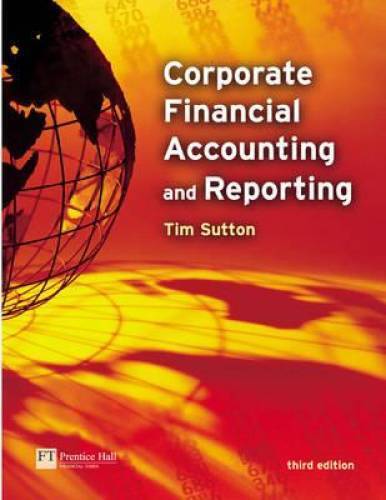Frequent-flier miles: accounting issues Three Englishmen, George, Harris and J., are flying to Canada on a Kingston
Question:
Frequent-flier miles: accounting issues Three Englishmen, George, Harris and J., are flying to Canada on a Kingston Airlines flight to enjoy a boating holiday in Northern Ontario. They’re travelling for free, using the frequent-flier miles they’ve accumulated (at the rate of one mile earned for each mile flown) with the airline. Somewhere over the Atlantic Ocean, the conversation turns to frequent-flier programmes and J., being a curious fellow, wonders how Kingston accounts for the miles he and other programme members have earned.
George: It’s simple: they record a liability. The liability is the product of (1) the free miles earned and
(2) their cost. I expect they measure the cost on an ‘opportunity cost’ basis. For example, in our case the opportunity cost is the revenue Kingston forgoes from a fare-paying customer wishing to fly from London to Toronto.
J.: Surely not the full fare. After all, look around you. The plane is half-empty. The airline isn’t turning away full-fare customers to allow us to fly. It would make more sense to measure the liability on an incremental cost basis – the additional costs the airline incurs when a frequent flier occupies one of those empty seats.
Harris: You’re both forgetting something. Not all miles earned are redeemed. I read the other day that at the end of 2001 frequent fliers had accumulated almost 8 trillion unused miles. So Kingston needs to apply a probability factor – the probability of the frequent flier redeeming the miles earned – to J.’s cost figure. This makes the actual liability so small the airline can forget about it for all practical purposes.
George: But miles don’t expire – unless they’re not used within three years of being earned. Airlines can’t ignore those unredeemed miles you mention. It was easy to get free seats on this flight but you can’t get them on the popular routes.
J.: That’s Harris’s point, isn’t it? The reason there are so many unredeemed miles is that frequent fliers can’t get the flights they want. In fact, once capacity starts filling up on a particular route, the airline usually restricts the number of free seats available. But I don’t agree the liability can be ignored.
The 8 trillion figure is an industry total. Some airlines may have a high redemption rate.
Harris: Perhaps – but that doesn’t mean they have a legal liability. Look at the small print of Kingston’s frequent-flier programme. ‘The accumulation of mileage credits does not entitle members to any vested rights. . . . In accumulating mileage, members may not rely on the continued availability of any award.’ That’s pretty clear, I reckon. Kingston can cancel its programme tomorrow and the miles we’ve earned but not used are worthless. Where is Kingston’s ‘obligation to transfer resources to a third party’ then? I wouldn’t be surprised if the airline accounts for the cost of air miles as and when they’re used rather than accrue a liability.
Required How do you think an airline like Kingston should account for frequent-flier miles and other travel awards? Does the company have a liability as the awards are earned and, if so, how should it measure it?AppenedixLO1
Step by Step Answer:






